Before we planted our first peach trees I spoke with and interviewed several veteran peach farmers. I wanted to know what they had learned the hard way. I didn’t want to make any easily avoided mistakes. The things those folks taught me have served us well, but none so much as the flat stared delivery of these words: “You’d better be on top of your sprays.”
You’d better be on top of your sprays.
Mr Southern, Peach Orchard outside of Lipan, TX on HWY 281
I’m embarrassed to admit that I didn’t take him as seriously as I should have. It wasn’t until the peach tree in my front yard started experiencing some significant challenges that those words came floating back to me.
Catfaced fruit from stinkbugs, brown rot from mold, decimation from grasshoppers, weak growth from scale. It’s an unfortunate reality that growing peaches organically is not commercially sustainable. In Texas we have far too many issues that we face that require intervention lest the crop be severely damaged or even lost. Unfortunately, going from the understanding of what needs to be done to the point of actually accomplishing it are quite far apart.
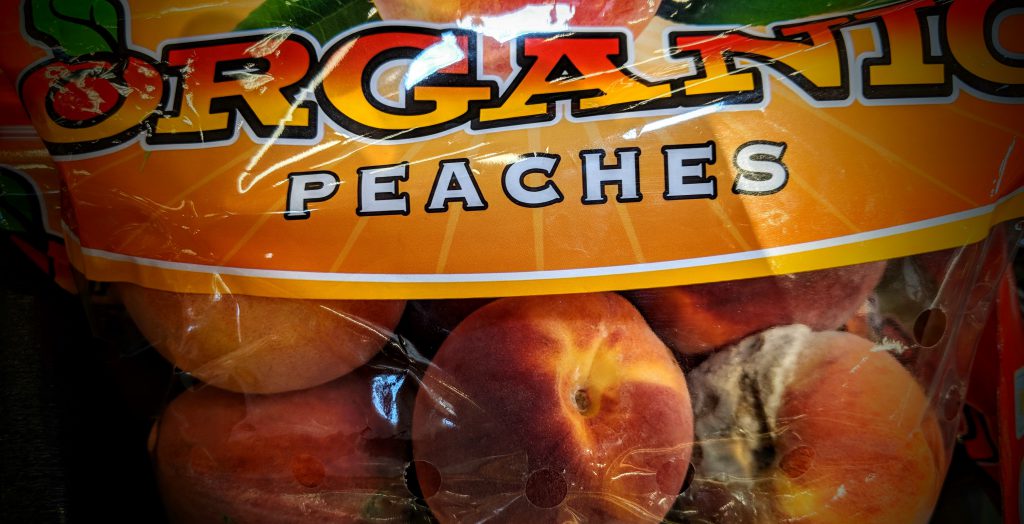
It didn’t take long to realize that the biggest hurdle I would face was to know what to spray on my trees and when to spray it. If I’m right, that’s why you’re here reading this. You want to know what to spray on your peaches and when to do it. I’m happy to tell you what we’ve learned, but I imagine you’ll be just like me. You wont really care until you see from your own experience that you have to take this seriously.
Do I Need a Commercial Spray License?
In short, no, you don’t need a commercial spray license – but you should apply for one anyway. Here’s the cold hard facts. You can get the job done with materials that don’t require an applicators license, but the study materials that you have to learn in order to get a license will teach you how to spray those chemicals safely. Every single one of these chemicals has a label on it to tell you how to use the product and what measures must be taken to do it safely. The test study material will tell you how to read those labels and educate you in applying them safely.
If you’re in Texas, you can start that application at the Texas Ag website. They’ll charge you for the test and study materials and ship them out to you to study. I wont lie, it was hard to drag myself through reading that material but in hindsight it was incredibly helpful.
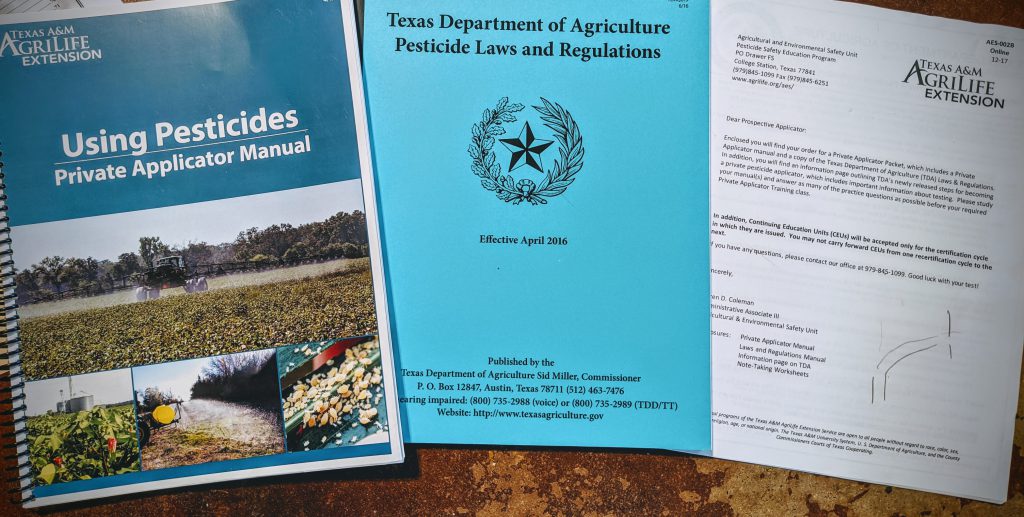
Do I Need Personal Protective Equipment?
YES. You need personal protective equipment (PPE). If you don’t exercise great care in using these products you can hurt yourself or the people around you. There is no excuse for not using PPE.
Basic PPE for the chemicals you’ll spray on peaches are:
- Long sleeve shirt and pants
- Long chemical resistant gloves
- Face shield
- Breathing Mask with appropriate filters
Trading your health for a better crop of peaches is a bad deal. Make the investment in good PPE that you’re comfortable in and that protects you well.
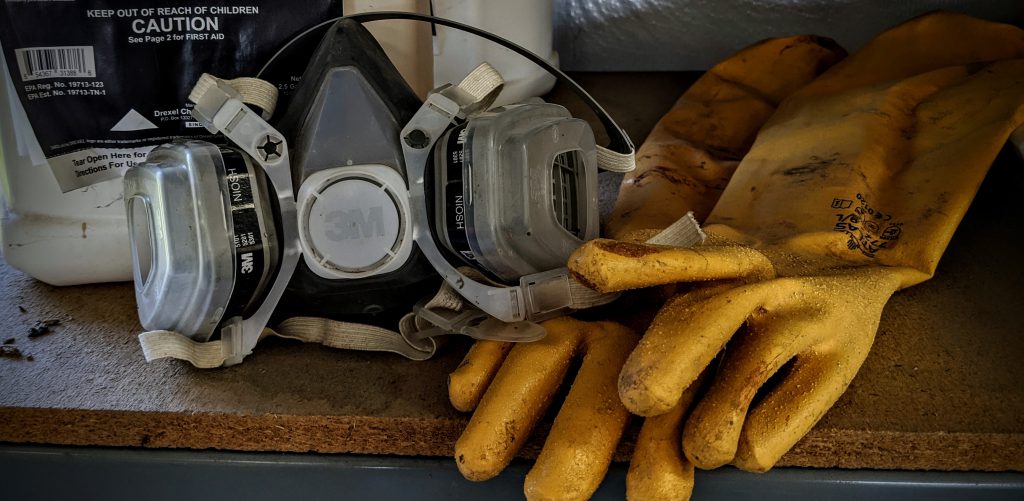
What Chemicals Do We Use?
What we spray on our peaches has been determined by several factors.
- What are we allowed to spray on peaches? We only use chemicals that are labeled for use on peaches. While some other chemicals may also be effective, they haven’t been determined to be SAFE for peaches. Our primary reference for determining this is the official Southeastern Peach, Nectarine, and Plum Pest Management and Culture Guide
- What do we need to spray on our peaches? Not everyone will face the same pest and environmental pressures that we do. What you spray will need to be adapted to what you need to fight against. Sometimes you wont know what that is until you’ve faced it. Once you figure out what you’re fighting, again go back to the guide referenced above and figure out what overcomes that issue.
- What can we afford to spray on our peaches? Sprays cost money. Ideally we will be using the most cost effective products in the perfect amount so as to treat the intended issue. Sometimes some products may be more effective but cost an arm and a leg. You have to consider the cost of the inputs to the benefit you intend to receive.

You can spray yourself broke!
Mr Jenschke, Jenschke Orchard in Fredericksburg, TX
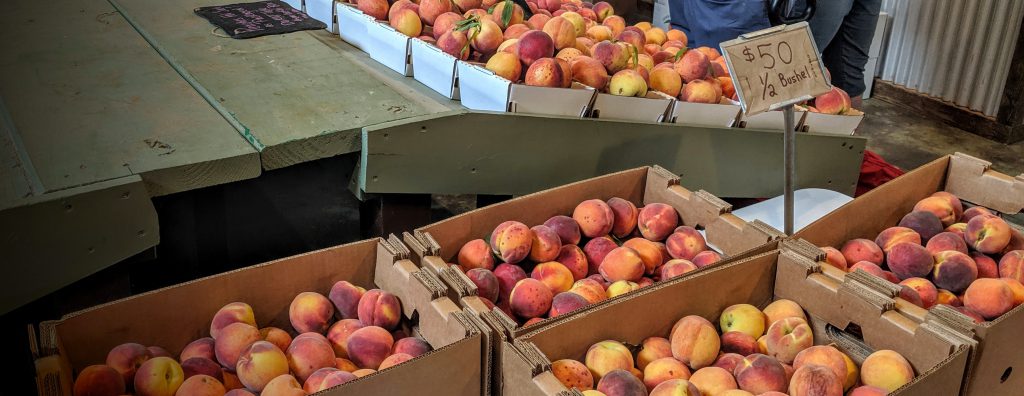
What follows is the list of chemicals that we spray and the timing for spraying them. This list isn’t a suggestion for what you need to be using. Rather it’s a reference point for you to learn from and make your own decisions in that regard.
| Month | Spray | Quantity | Designed to Control? | When to Spray |
| January | Dormant Oil Hatchet – Insecticide 800 Plus – PH buffer | Dormant Oil 2-4.5 Gallon Per 100 Gallon Mixed Spray. 150-200 Gallons Mixed Spray Per Acre | Dormant Oil : Scale and European Red Mite Hatchet : Insecticide for overwintering insects | |
| February (pink bud) | Imidan 70 W (insecticide) Captan (fungicide) 800 Plus – PH buffer | Captan: 2.5-4 quart per acre Imidan 70W: 2-4lbs per acre These can be tank mixed and sprayed at the same time as needed. | Imidan: Plum Curculio Captan: Leaf Curl | Imidan: Spray before shuck split Captan: If there is evidence of leaf curl in then orchard from the previous year. |
| March | Bravo or Imidan 70 W (insecticide after flowers are gone) Captan (fungicide) 800 Plus – PH buffer | Captan: 2.5-4 quart per acre Imidan 70W: 2-4lbs per acre These can be tank mixed and sprayed at the same time as needed. | Imidan / Bravo: Plum curculio, plant bugs, oriental fruit moth, lesser peachtree borer (suppression) | Wait until all fruit blooms are gone so that you don’t kill the bees pollinating the flowers. |
| April | Captan (fungicide) Imidan 70 W (insecticide) 800 Plus (pH buffer) | Captan: 2.5-4 quart per acre Imidan 70W: 2-4lbs per acre These can be tank mixed and sprayed at the same time as needed. | Imidan 70 W : control stink bugs. Captan: Fungal growth on fruit | Imidan: Start sprays after bloom completes. Spray if there is evidence of stink bugs. Spray at 2 week intervals as needed. Captan: Start sprays if it has recently rained |
| May | Captan (fungicide) Macho 800 Plus (pH buffer) | Captan: 2.5-4 quart per acre Macho: 3.5 ounces per acre These can be tank mixed and sprayed at the same time as needed. | Macho : control stink bugs. Captan: Fungal growth on fruit | Macho: Spray if there is evidence of stink bugs. Spray as often as 2 week intervals Captan: Spray if it has recently rained |
| June | Captan (fungicide) Macho 800 Plus (pH buffer) | Captan: 2.5-4 quart per acre Macho: 3.5 ounces per acre These can be tank mixed and sprayed at the same time as needed. | Macho : control stink bugs. Captan: Fungal growth on fruit | Macho: Spray if there is evidence of stink bugs. Spray as often as 2 week intervals Captan: Spray if it has recently rained |
| July | Captan (fungicide) Macho (insecticide) 800 Plus (pH buffer) | Captan: 2.5-4 quart per acre Macho 3.5 ounces per acre These can be tank mixed and sprayed at the same time as needed. | Macho : control stink bugs. Captan: Fungal growth on fruit | Macho: Spray if there is evidence of stink bugs. Spray as often as 2 week intervals Captan: Spray if it has recently rained |
| August | ||||
| September | ||||
| October | Kocide 800 Plus – PH buffer | Kocide 2000: 6-7 lb/100 gal (2.1-2.5 lb MCE) or Kocide 3000: 3.5-7 lb/100 gal (1-2.1 lb MCE) | Bacterial Spot and Leaf Curl | |
| November | ||||
| December | Dormant Oil Lorsban 4E 800 Plus – PH buffer | Dormant Oil 1-1.5 Gallon Per 100 Gallon Mixed Spray. 150-200 Gallons Mixed Spray Per Acre Lorsban 4E 1.5-2 pint / acre | Dormant Oil: Scale European red mite Lesser peachtree borer | Dormant Oil after a good hard frost and leaves are all gone. Temperatures between 28F-65F |
- Dormant Oil. When properly applied, this relatively harmless product will suffocate / smother scale and potentially other small insect eggs.
- Imidan 70 W: Insecticide
- Macho: Insecticide
- Hatchet: Insecticide
- Captan: Fungicide
- Kocide: Controls bacterial spot and leaf curl.
- 800 Plus pH Buffer. A necessary surfactant and pH buffer. Without this many products are far less or completely ineffective.
Now What?
I hope that the list above gives you a good place to start. If you haven’t already, go send off for the commercial applicators license study material. Once you feel like you fully understand the DANGERS involved in spraying, go and buy your Personal Protective Equipment (PPE).
Only once you have done those things would I suggest you call your local farm supply. We buy our chemicals from Farley Farm Supply in De Leon, TX. Sometimes you’ll be limited by what they have available. If they don’t have what you need, refer back to the spray guide to see what other products control the same issue. Thankfully there are often multiple products to control each type of issue.
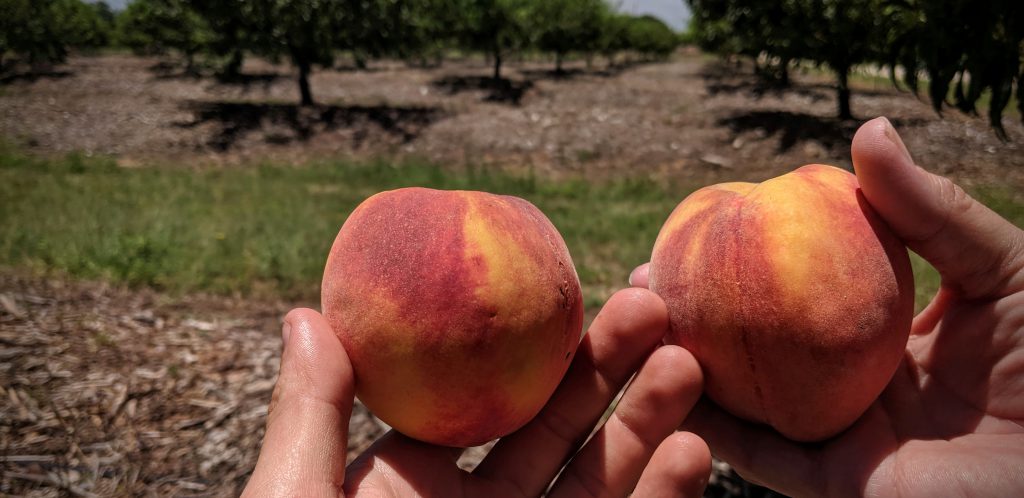
Let me close this by saying that if you find something that works well for you, tell us! We are always excited to hear what works well for other growers. There’s always room for improvement and I’m eager to learn from other people’s successes.

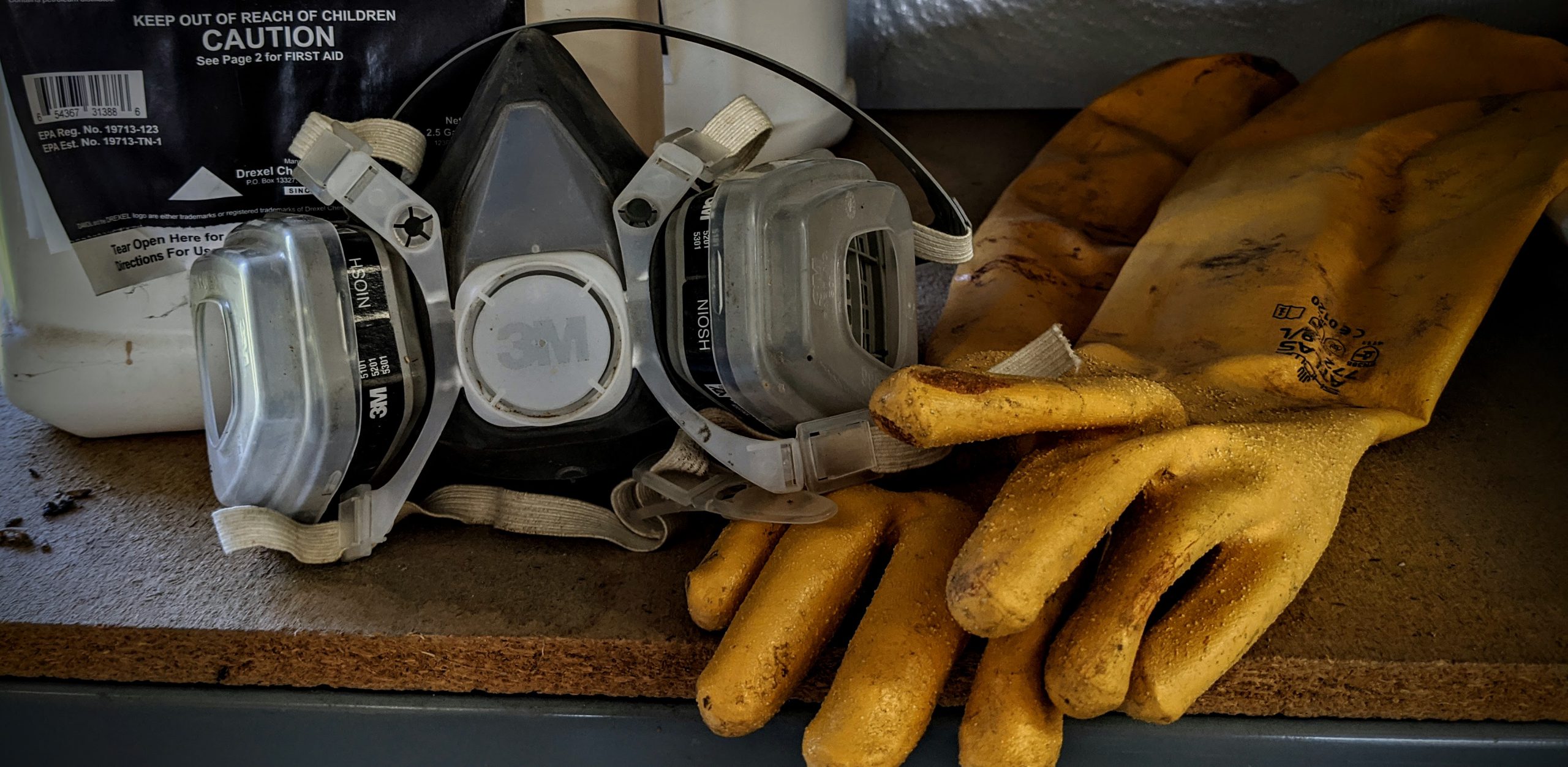
Your website is very informative. Thanks for taking the time to share your experiences.
Thanks for the kind words! Like Russ Studebaker in Fredericksburg, TX told me once, “Things are more variable than raising peaches 25 years ago, so we all are constantly learning and adapting. The communication between growers is critical.”
If our experiences can benefit you, then share yours with the rest of us so we can learn from you too!
May 11 2025 Long island ny
I just saw a male peach tree borer in my trap.
what should I do
[…] managing crop pressures in our area involve a chemical spraying schedule that reaches from one end of the year to the other. If you don’t spray for bugs in February when the flower buds are just starting to swell, […]